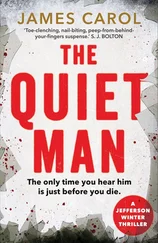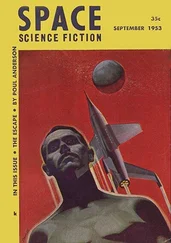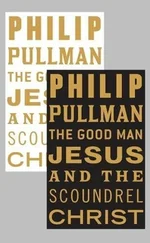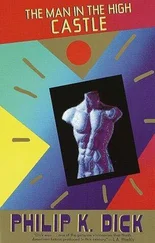Gaby Monet and forensic psychiatrist Park Dietz, with an HBO film crew in tow, showed up at the Trenton State Prison to do the third documentary featuring Richard Kuklinski. By now Richard had put on weight from his sedentary lifestyle. He did no exercises, didn’t go out in the yard; but he was still as strong as a bull and very dangerous. He’d been in jail now for over ten years. He had become used to prison, had accepted it as his permanent home, the place where he’d die. He wouldn’t let anyone in his family come visit him anymore. He didn’t want his daughters and Barbara frisked by the female guards, so he put a stop to their visiting the prison.
A somewhat kinder, gentler Richard sat down with Dr. Park Dietz, and for the first time ever Richard spoke to a forensic psychiatrist who had interviewed serial killers before. A tall, reserved man with piercing blue eyes, Dietz had worked with law-enforcement outfits across the country, including the FBI’s Behavioral Science Unit, and had talked with Jeffrey Dahmer, John Wayne Gacy, and other infamous serial murderers; he frequently appeared on news shows to discuss the little-understood phenomenon of serial murder.
A change had clearly come over Richard. He now joked often, was outgoing, friendly, introspective, and even self-effacing. He was not morose and stone-faced as he had been in the first two HBO specials. Much of this “new Richard” had to do with Gaby Monet’s kind, gentle ways. Richard had grown fond of her. He trusted her and considered her a friend—perhaps the only real friend he’d ever had, he says. Gaby too had grown quite fond of Richard. She recently said of him: “Richard is one of a kind: he is smart, charming, funny, and a mesmerizing storyteller. He has a very likable side, and thank goodness that’s the only side of him I’ve ever known.”
When Richard was sent to prison, he weighed 290 pounds. He was now about 315, but still moved with catlike efficiency and agility. His face was notably fuller, his cheeks and jowls somewhat loose on his face. He also had lines and creases where before there’d been none. Prison had taken a clear toll on Richard.
For thirteen hours, over a six-day period, Dietz asked Richard pointed, probing questions about his violence, which Richard answered with chilling honesty. He was now even more engaging because he was so open and readily shared his true feelings about the murders he committed, about his childhood, the animals he tortured, his cold lack of empathy for the people he killed, tortured, shot, stabbed, and poisoned. He talked about murder like a chef discussing the various ingredients of different perfected dishes. He readily spoke about his father, the violence he suffered at his hands, the violence he suffered at his mother’s hands. He wasn’t, it was obvious to Dietz, looking for an excuse or someone to blame for the path he walked in life—he was just telling the truth about what he’d been through as a boy, what he saw, what he felt, the hatred that lived inside his head.
When Richard told Dietz about the three men he killed in South Carolina while coming back from Florida, Dietz said, “Was that, you think, a capital offense, this guy cutting you off?”
Richard did not like that question or the way Dietz asked it. He was, Richard felt, judging him, speaking down to him, and right there on camera one can readily see the anger Richard felt color his face like a ripe strawberry.
“Now,” Richard said, “you’ve made me angry,” and he stared at Dietz with cold, detached, deadly eyes. If looks could kill, Dietz would have keeled over dead. After some tense seconds slowly passed, they discussed what had upset Richard about Dietz’s question, and Richard acknowledged that it was because Dietz had “spoke down to me”—judged him.
“Perhaps,” Dietz suggested, “like your father had?”
“Just like my father,” Richard readily agreed, and went on to say how he still regretted not killing Stanley.
Many say this third documentary was the most compelling of all because in it Richard was the most open and relaxed, and the world soon got another sixty minutes of Richard telling how he killed people and got rid of bodies, how he dismembered people with knives and saws and threw them down mine shafts, further horrifying and shocking people all over the globe. At the end of the piece, Dietz told Richard he had a lot of pent-up anger because of what his father had done to him—no shit, Sherlock.
Richard sat and listened politely, now the perfect gentleman, a far cry from who he had been when he was sent to prison.
“Interesting,” Richard contemplatively said.
In the course of telling Detectives Robert Anzalotti and Mark Bennul about the hit on Detective Peter Calabro, Richard had grown comfortable and at ease with the two detectives, especially Anzalotti, and he began telling them about more New Jersey murders he had committed that had never been attached to him. He remembered details, times, and places with uncanny accuracy, the detectives realized.
Everything Richard said was checked and rechecked by Anzalotti and his partner, and all proved true, and soon the two detectives cleared twelve unsolved murders thanks to Richard, including the killing of Robert Pronge, a.k.a. Mister Softee.
“For the most part,” Anzalotti recently said, “everything he said was true; where he shot people, the caliber he used.”
In December of 2004 Richard appeared in Bergen County Superior Court and pleaded guilty to the murder of Detective Peter Calabro and the murder of Robert Pronge, and received still another life sentence. That day Peter Calabro’s daughter was also in the courtroom. She had been four when her father had been killed. She wanted to talk to Richard, wanted to know why he killed her father, but Anzalotti wouldn’t let her. Richard, in fact, wanted to talk with her, wanted to tell her it was nothing personal, that if he hadn’t done it someone else would have.
“Stupid is as stupid does,” were Forrest Gump’s immortal words, and what Sammy Gravano—the crime-fighting hero of the federal government, a man who won glowing praise from scores of federal prosecutors—did with his freedom was stupid.
Very stupid!
Gravano ended up living in Arizona, where he started a moving business and began selling the popular drug ecstasy to schoolkids. He not only got involved in this sordid business, but he involved his family—his wife and son Gerald. They were all arrested; Gravano went to trial, was found guilty, and was sentenced to twenty years. Gravano had been the poster boy for the federal government’s witness-protection program, and wound up using his ill-gotten freedom to sell drugs to kids.
“Stupid is as stupid does” indeed.
When the New Jersey attorney general’s office felt it had an airtight case against Gravano for his complicity in the shotgun murder of Detective Calabro and had gotten an indictment against him for the murder, Detectives Robert Anzalotti and Mark Bennul flew to Arizona and placed Gravano under arrest for this killing.
Many in the New Jersey attorney general’s office, and certainly Detectives Anzalotti and Bennul believe that the federal government knew about Gravano’s part in the Calabro killing but hid it, and they plan to prove it in open court. Richard will, of course, be the state’s star witness against Gravano. The trial is scheduled, as of this writing, for the summer of 2006, and will take place in the Bergen County Superior Court—the same court where Richard was tried, convicted, and sentenced.
In early April of 2005, Gravano’s lawyer, Anthony Ricco, went to see Richard at the Trenton State Prison. Richard claims that Ricco offered him two hundred thousand dollars not to testify against Gravano.
Conversely, Anthony Ricco claims it was Richard who offered to throw the case for two hundred thousand dollars. As of this writing, who, if anyone, solicited a bribe has not been established. Anthony Ricco, however, had to withdraw from representing Gravano because he is now scheduled to appear as a witness on Gravano’s behalf at Gravano’s trial for the killing of Detective Peter Calabro.
Читать дальше












